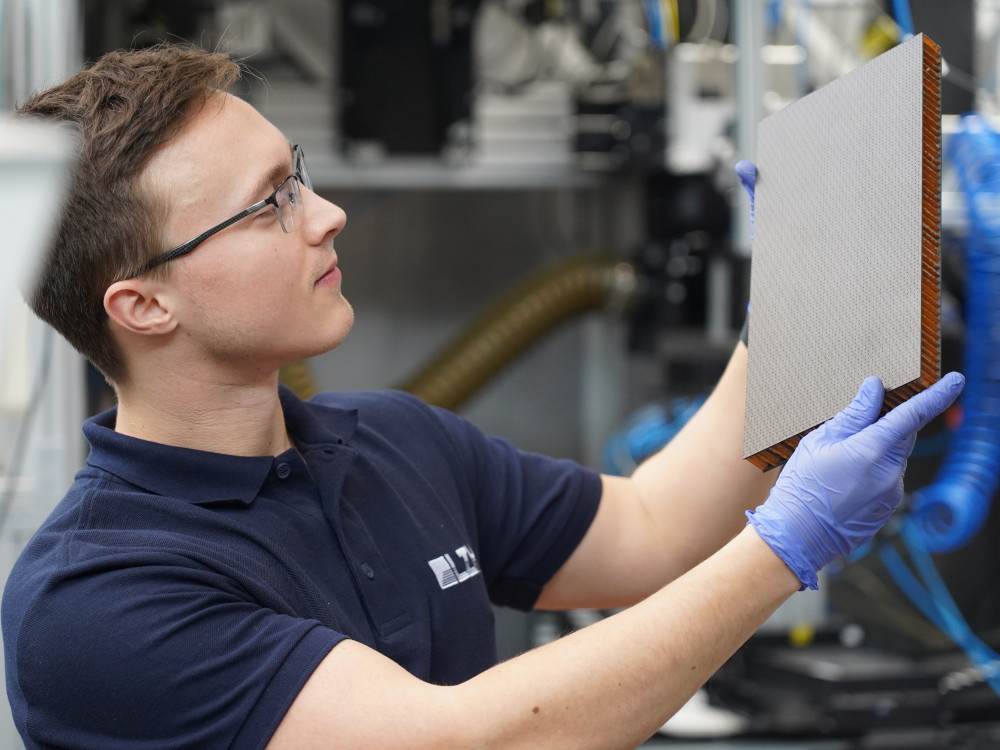
04 Mar Drilling composite materials with the laser
Composite materials such as carbon fiber-reinforced plastics (CFRP) are ideal for lightweight construction and are used in automotive and aircraft construction, among other things. To simplify the processing of CFRP and sandwich materials, scientists at the Laser Zentrum Hannover (LZH), together with the companies Invent and KMS Technology Center, have developed a laser process with an associated system setup.
Beam splitting accelerates the process
In the process, a laser beam is split into partial beams using specially designed diffractive optical elements so that several drill holes can be created simultaneously. According to the researchers, this can ideally be done with up to 25 partial beams in order to reduce the drilling time to just one 25th of the original time and thus to less than a tenth of a second per hole – a value that, according to the researchers, would not be achievable with conventional methods, even for larger holes. Using this process, the scientists were able to produce drill holes with a diameter of just 1.2 mm to 0.25 mm, which cannot currently be realized using conventional mechanical processes in sandwich and CFRP materials. The optomechanics manufactured by KMS Technology Center should also make the process highly flexible in terms of bore diameter and drilling pattern without the need to change tools.
Noise reduction thanks to acoustic drilling
Micro-drilling with the laser should be of interest to the aviation industry, for example. To reduce noise emissions from aircraft, sound-absorbing cladding elements are used to line engines, for example. Such components are often made from CFRP or CFRP sandwich materials and then provided with a large number of small holes over a large area. According to the researchers, micro-drilling with the laser is particularly suitable for these acoustic holes, as laser drilling is contactless and therefore force-free and wear-free. This eliminates high costs due to tool wear and quality problems caused by blunt drills. In acoustic tests, the sound absorption properties of the laser-drilled sandwich panels were also rated as very good by the project partner Invent.
The project ‘Micro-drilling of sandwich materials: Development of a laser process’ (miBoS) is funded by the Federal Ministry for Economic Affairs and Climate Protection under the funding code 20T1926C.
Source and image: www.lzh.de






